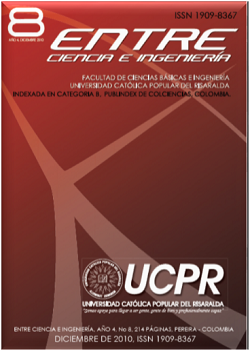Technical Aspects and Interconnection Process at Services Level in NGN
Keywords:
NGN, service level, nterface, protocols, testing schemeAbstract
Next generation networks have been highly accepted by different operators in the world nowadays. They offer a wide adaptability of the networks already known, demand lower costs and increase efficiency when providing new and better services to end users, regardless the different transmission ways. Apart from the benefits already mentioned, NGN allows the internal development of their levels independently and also the service or transportation, so the interconnection process can be managed and implemented individually for the benefit of its evolution.
This paper presents the scope, objectives and characteristics of the NGN, also analyzes the separation of the planes and transport services, focusing especially on the first, its importance in the evolution of networks, all the same, identifying the interfaces, protocols and benchmarks required at this level for the implementation of a scheme of interconnection tests.
References
Carrascal, M. Chicaíza, A. Meneses, J. (2010). Propuesta de esquema de pruebas para la interconexión de redes NGN en el nivel de servicio [Tesis de Pregrado, Universidad del Cauca Popayán]. 100p.
European Telecommunications Standards Institute (2009). Methods for Testing and Specification (MTS): The Testing and Test Control Notation version 3; Part 6: TTCN-3 Control Interface (TCI), ETSI ES-201-873-6. [Online] Available: http://www.etsi.org
IEEE (2002). A Brief History of Communications, IEEE Common. [Online] Available: http://www.comsoc.org/
Internet Engineering Task Force (2002). SIP: Session Initiation Protocol, RFC 3261 Interdomain Requests 26.3.2.2. [Online] Available: http://www.ietf.org
International Telecommunication Union (2007). Simposio Mundial de la UIT para Organismos Reguladores (GSR) http://www.itu.int/ITU-D/treg/Events/Seminars/GSR/GSR07/ Chairmansreport_es.pdf
International Telecommunication Union (2009). Packet based multimedia communications systems, ITU-T Recommendation H.323. [Online] Available: http:// www. itu.int.
International Telecommunication Union (2006). Requisitos y arquitectura funcional de las NGN, versión 1, ITU-T Recommendation Y.2012, 2006. [Online] Available: http:// www.itu.int/rec/T-REC-Y/e
International Telecommunication Union, (2004). General principles and general reference model for next generation networks, ITU-T Recommendation Y.2011, [Online] Available: http://www.itu.int/rec/T-REC-Y/e
International Telecommunication Union (2010). NGN – Frameworks and functional architecture models: Functional requirements and architecture of next generation networks, ITU-T Recommendation Y.2012. [Online] Available: http:// www.itu.int.
International Telecommunication Union (2008). Terms and definitions for Next Generation Networks, ITU-T Recommendation Y.2091. [Online] Available: http://www.itu. int
International Telecommunication Union (2002). General architectural model for interworking, ITU-T Recommendation Y.1215. [Online] Available: http://www.itu. int/rec/T-REC-Y/e
López V. (2006). Provisión de calidad de servicio extremo a extremo en redes multicapa y multidominio. UAM, Madrid, España. Disponible: www.ii.uam.es/esp/posgrado/ proyectos/victor_lopez.pdf
Moreno, F.M. (2007). Eficacia, eficiencia y economía de la Red. Perspectiva de las AA.PP. p.p.58-61 [Online] Available: http://www.revista-ays.com/DocsNum09/PersAAPP/martin. Pdf
SIUST (2006). Resultado de consultas abonados de telecomunicaciones. http://www.siust.gov.co/siust/ tematico/consultaTematicaXUsuarioArbA.jsp
Yagüe, J. (2005). Indicadores comparados de servicios de telecomunicación. Ministerio de industria turismo y comercio, Madrid, España.








 Revista Entre Ciencia e Ingeniería
Revista Entre Ciencia e Ingeniería .png) entrecei@ucp.edu.co
entrecei@ucp.edu.co.png) ISSN (Impreso) 1909-8367 - ISSN (En Línea) 2539-4169
ISSN (Impreso) 1909-8367 - ISSN (En Línea) 2539-4169 Attribution-NonCommercial 4.0 International (CC By-NC 4.0)
Attribution-NonCommercial 4.0 International (CC By-NC 4.0)
.png) Carrera 21 No. 49-95 Av. de las Américas, Pereira, Risaralda, Colombia
Carrera 21 No. 49-95 Av. de las Américas, Pereira, Risaralda, Colombia